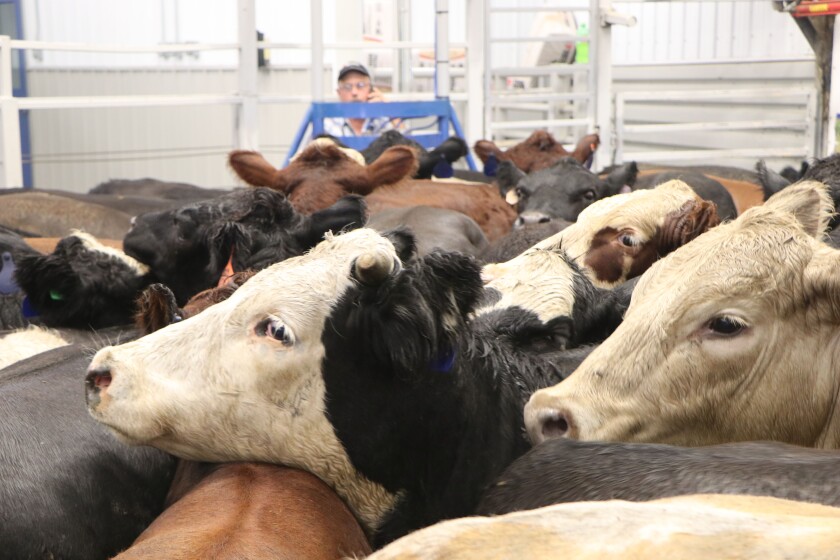Encourage Your Organization: Bagley Risk Management Insights
Encourage Your Organization: Bagley Risk Management Insights
Blog Article
Comprehending Animals Danger Security (LRP) Insurance Policy: A Comprehensive Guide
Browsing the world of livestock danger security (LRP) insurance policy can be a complex endeavor for numerous in the agricultural market. This type of insurance coverage provides a security internet versus market changes and unanticipated conditions that could influence livestock producers. By understanding the details of LRP insurance policy, manufacturers can make educated decisions that might secure their operations from economic threats. From how LRP insurance policy functions to the numerous protection options offered, there is much to reveal in this detailed guide that could potentially form the means animals producers come close to risk administration in their businesses.

Exactly How LRP Insurance Functions
Occasionally, recognizing the mechanics of Livestock Danger Security (LRP) insurance policy can be complex, however breaking down how it works can offer clearness for farmers and herdsmans. LRP insurance policy is a threat administration tool designed to secure animals manufacturers versus unanticipated rate decreases. It's important to note that LRP insurance policy is not an income assurance; instead, it focuses only on rate threat defense.
Qualification and Insurance Coverage Options

When it comes to protection alternatives, LRP insurance offers producers the flexibility to pick the coverage degree, protection duration, and endorsements that ideal fit their risk monitoring needs. Coverage levels usually range from 70% to 100% of the expected finishing worth of the insured livestock. Manufacturers can additionally pick insurance coverage durations that align with their manufacturing cycle, whether they are guaranteeing feeder cattle, fed cattle, swine, or lamb. Recommendations such as price danger defense can additionally tailor coverage to safeguard against adverse market variations. By comprehending the eligibility criteria and protection alternatives available, livestock manufacturers can make informed decisions to handle threat properly.
Pros and Cons of LRP Insurance Policy
When assessing Livestock Threat Protection (LRP) insurance, it is important for livestock manufacturers to weigh the advantages and drawbacks intrinsic in this risk monitoring device.

One of the key benefits of LRP insurance is its ability to supply protection versus a decline in livestock prices. Additionally, LRP insurance policy supplies a degree of adaptability, permitting producers to customize protection degrees and plan durations to fit their particular requirements.
One restriction of LRP insurance policy is that it does not shield versus all types of risks, such as disease outbreaks or all-natural calamities. It is essential for manufacturers to thoroughly evaluate their specific risk direct exposure and economic circumstance to figure out if LRP insurance coverage is the right danger monitoring tool for their procedure.
Understanding LRP Insurance Coverage Premiums

Tips for Taking Full Advantage Of LRP Benefits
Maximizing the benefits of Animals Danger Defense (LRP) insurance needs tactical preparation and aggressive threat administration - Bagley Risk Management. To take advantage of your LRP protection, think about the adhering to suggestions:
Frequently Analyze Market Problems: Stay educated concerning market trends and rate changes in the animals sector. By keeping an eye on these aspects, you can make informed decisions regarding when to buy LRP protection to secure versus prospective losses.
Establish Realistic Insurance Coverage Levels: When choosing protection degrees, consider your manufacturing expenses, market value of livestock, and prospective dangers - Bagley Risk Management. Establishing realistic coverage levels makes sure that you are appropriately secured without paying too much for unnecessary insurance coverage
Diversify Your Insurance Coverage: Instead of counting entirely on LRP insurance, consider expanding your danger administration techniques. Combining LRP with various other threat administration tools such as futures agreements or alternatives can give site web detailed protection against market unpredictabilities.
Review and Change Insurance Coverage Frequently: As market conditions change, regularly assess your LRP coverage to ensure it aligns with your existing threat direct exposure. Changing insurance coverage levels and timing of acquisitions can assist maximize your danger protection approach. By complying with these tips, you can make best use of the benefits of LRP insurance and guard your livestock procedure their website versus unexpected risks.
Final Thought
In conclusion, animals risk defense (LRP) insurance coverage is a useful tool for farmers to take care of the monetary dangers connected with their animals procedures. By recognizing how LRP functions, qualification and coverage choices, as well as the pros and cons of this insurance, farmers can make informed decisions to shield their resources. By carefully taking into consideration LRP costs and applying methods to maximize benefits, farmers can alleviate possible losses and make certain the sustainability of their operations.
Livestock producers interested in acquiring Animals Risk Security (LRP) insurance can explore a variety of qualification standards and protection choices customized to their details livestock operations.When it comes to coverage options, LRP insurance provides producers the versatility to select the protection degree, insurance coverage period, and endorsements that finest fit their threat administration demands.To comprehend the complexities of Animals Risk Security (LRP) insurance coverage completely, recognizing the elements influencing LRP insurance coverage premiums is important. LRP insurance coverage premiums are identified by different components, including the protection degree selected, the anticipated rate of animals at the end of the coverage duration, the kind of livestock being insured, and the size of the protection duration.Evaluation and Readjust Coverage On a regular basis: As market problems transform, occasionally evaluate your LRP insurance coverage to guarantee it lines up with your existing risk exposure.
Report this page